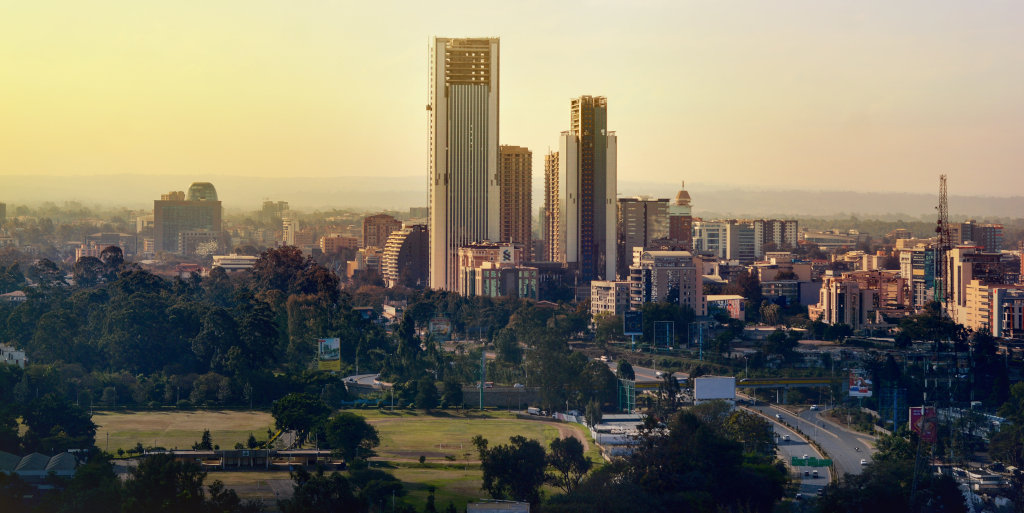Nairobi, Kenya
By Cavan Osborne, portfolio manager, Old Mutual Investment Group
A vast and largely untapped region, Africa has, for many years, been heralded as the final frontier when it comes to economic and investment opportunities. Key drivers such as its youthful demographics, increasing urbanisation, consumer demand and ongoing opportunity for technological innovation have buoyed expectations for its economic outlook.
However, in recent years, the number of challenges facing the region have hindered investor sentiment and caused optimism around its investment prospects to wane, with foreign exchange risk being chief among these. For the last four years, Africa has experienced strong headwinds in the form of currency devaluations, which have blown away the positive earnings growth and dividends African companies have achieved over the past decade. During this period, the MSCI Africa (excluding South Africa) benchmark has gone nowhere in dollar terms and even if you invested in some amazing businesses, the returns got smashed by currency movements.
What the last 10 years have taught us is that currencies matter.
The currency moves in the largest four markets reflect challenging dollar returns. The Nigerian currency lost 88% of its value in 10 years and Egypt lost 85%. Over the same period, the South African rand declined 44%, and Morocco’s dirham is off around 20%.
The post-Covid sentiment on Africa is therefore looking very different to 10 years ago, with many investors turning to other regions, having underestimated Africa’s foreign exchange risks, which comprise both volatility and liquidity risk, as well as the risk of repatriation.
But the tide is turning
With the strong headwinds that Africa has experienced over the past four years in the form of currency devaluations, currencies are now reflecting all the bad news, and we therefore don’t expect currency exchange to dominate performance over the next two years. This means that returns will be driven by dividends, growth and change in the rating.
For the short- to medium-term, we expect a stable currency exchange across Africa – and even the possibility of currency gains. This will allow returns to be driven by dividends, growth and rating change.
- Dividends (the blue bars in chart 1), have been consistently around 4% for the index. The Old Mutual African Frontiers Strategy’s expected dividend is currently around 7%.
- Earnings growth expectations are expected to grow 21%.
- The rating change is trickier as currently the strategy trades at around 5.7x PE. This compares to the index at 10x. Over the last few years, the strategy’s PE has averaged around 7x, peaking at 11x and bottoming at 4.5x. Given that Africa is back in favour, we think that the PE can at least drift back toward the 7x. A move to the average PE will add 20% to performance.
Using this framework, the strategy could deliver a return of over 40%.

Back in favour
However, for the rating (or PE) to improve, Africa needs to be back in favour. While African equity markets tend to lag developed markets by six to 12 months, fixed income investors respond to news and information instantly. Fixed income investors keep a very close eye on macroeconomic and political developments; therefore, they are the best barometer of African sentiment. In the first half of this year Eurobonds were valued at more than double compared to 2023, with all of Kenya, Côte d’Ivoire, Senegal and Benin having issued successfully. This suggests that portfolio investors are back.


Considering this confidence that the top-down arguments are pointing in the right direction, at a stock level, we are also feeling confident:
- Around 50% of the Old Mutual African Frontiers Strategy is invested in banks – banks are benefitting from elevated interest rates at this time, and even when rates start rolling off, it will take some time for the loan book to reprice.
- The telecommunications sector represents 13% of the portfolio. Africa is largely a pre-paid market, with people buying data or minutes each day, or week. Therefore, most users don’t have unlimited contracts. Social media data usage continues to go up, which drives data revenue. And imagine how data-hungry artificial intelligence will be. At the same time, mobile money continues to grow and develop in most markets.
- The consumer staples sector has had a difficult period. The weaker exchange rates have put big pressure on raw materials and operating costs, such as fuel. While these high costs must still work through the system, margins will normalise in the next 12 months.

As a collective result of all the above, we are the most confident about investing in Africa over the short- to medium-term than we have been since the start of the Covid-19 pandemic. The top-down story (dominated by our view on currency stability) and the bottom-up opportunities we are seeing from the ground level, combined with fixed income investors giving Africa the heads up, are all pointing to favourable returns ahead. The long-term African investment arguments of favourable demographics, low correlation and technology leapfrogging will again be felt, rather than be lost to currency headwinds. With the Old Mutual African Frontiers Strategy trading on a 4.5x PE, it is currently offering an expected dividend yield of 7.5%. It is an opportune time for investors to re-evaluate Africa for investment returns.
This article was first published by Old Mutual Investments


